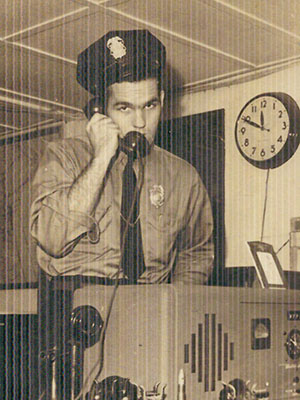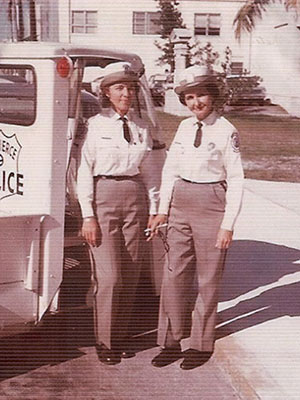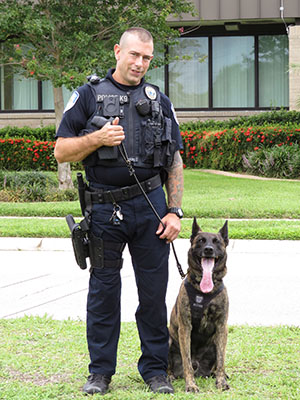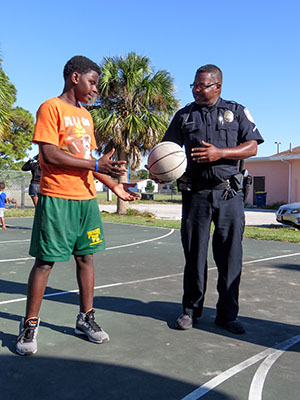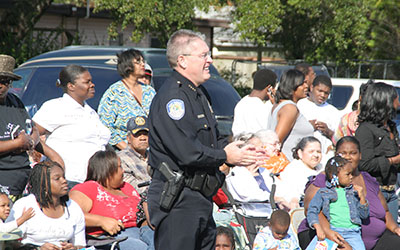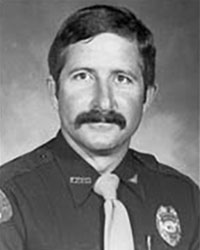Centennial Salute
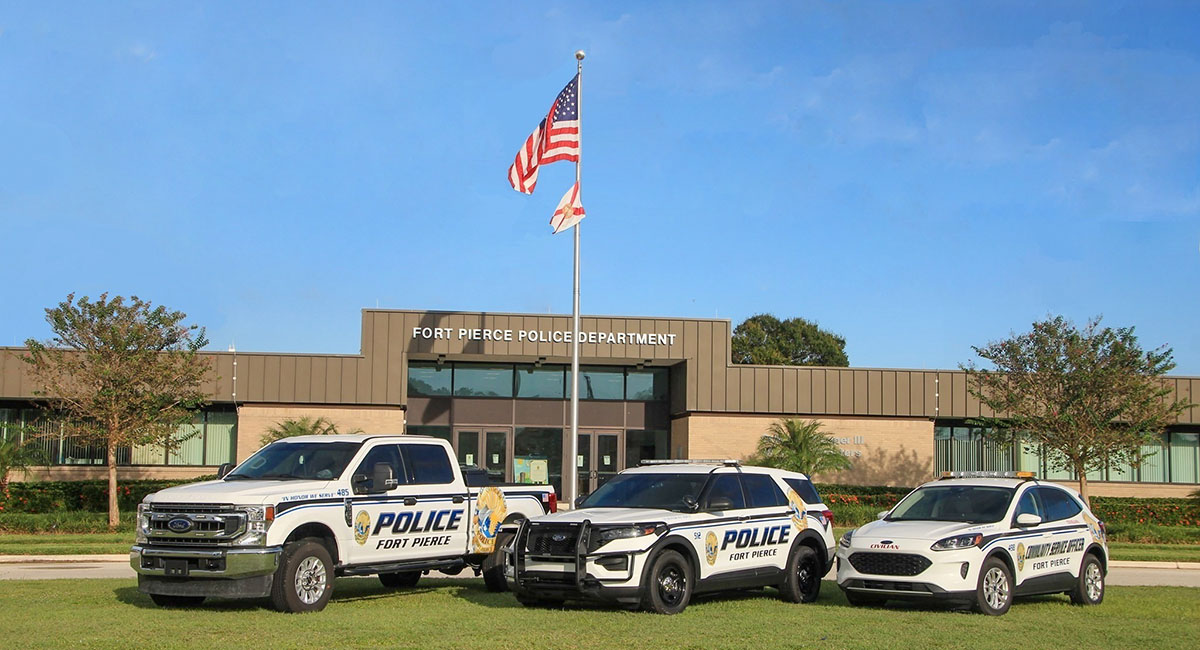
Police department marks a century of growth, progress and commitment to excellence
BY ELLEN GILLETTE
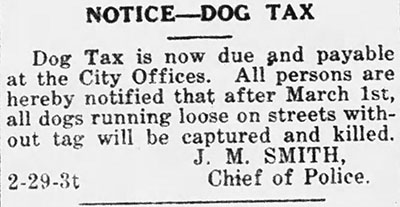
In 1904, Fort Pierce had 1,000 citizens, a newspaper, hotels, a cattle company, five boarding houses, two boat building companies and doctors, but no police department.
By the 1920s, women could vote. Jazz was gaining popularity. The Ashley Gang still rode in South Florida. Bootleg liquor was big business during Prohibition; coastline towns made ideal landing spots. Florida’s land boom brought an influx of people. The growing community of Fort Pierce needed law and order that didn’t depend on marshals or the county sheriff.
The city hired its first police chief on March 21, 1923, followed by five officers.
“The Fort Pierce Police Department has made extraordinary progress and growth since its formation,” Chief Diane Hobley-Burney says. “Today, [we have] one chief, two deputy chiefs, 118 officers and 38 civilian employees.”
As the department’s 100th anniversary approaches, Hobley-Burney and her command staff lead a productive team committed to excellence.
“Not only have we grown in terms of diverse personnel,” she says, “but the way we police has evolved. I am extremely proud of the women and men of the Fort Pierce Police Department and deeply honored to be a part of the legacy of our great department and motto ‘In Honor We Serve.’”
Festivities for the centennial include a noon ceremony at headquarters on March 21 followed by an evening at Fort Pierce Yacht Club for police officers, other employees and spouses. On April 3, the city will host a “Back the Blue” public event at Causeway Cove Marina.
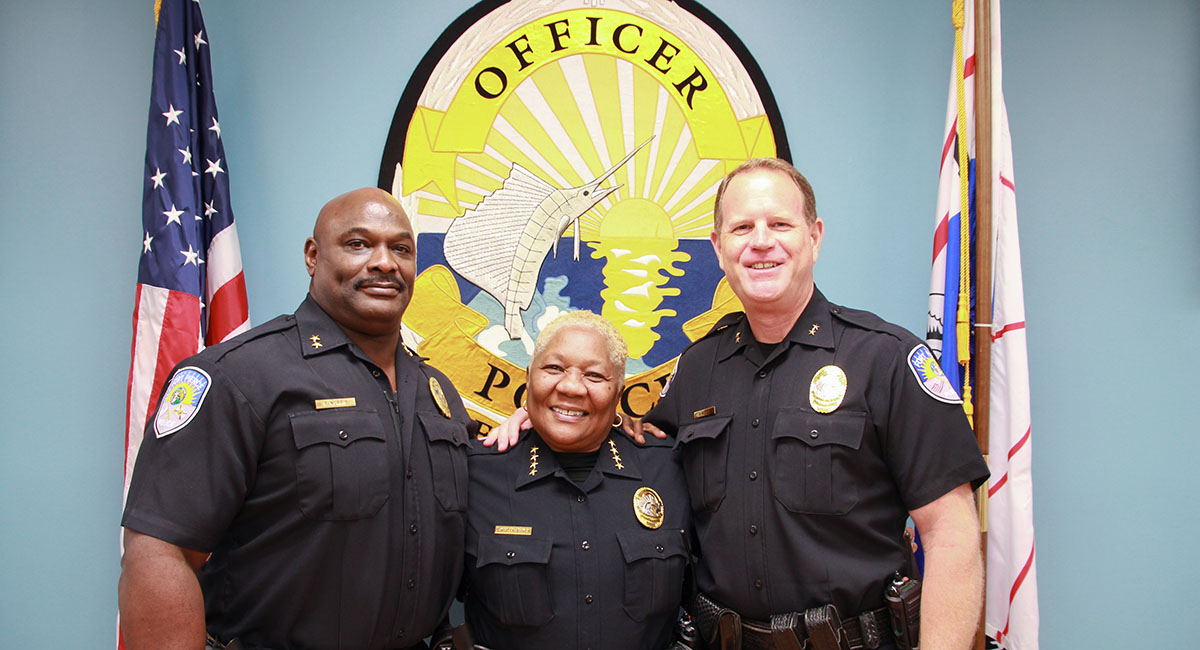
FORMATIVE YEARS
“The early formative years of our police force had their chaotic moments,” Fort Pierce Mayor Linda Hudson says, “but as the force grew over the century in numbers and expertise, the Fort Pierce Police Department aspires to the highest standard of professionalism and excellence. I couldn’t be more proud.”
There have been 25 police chiefs in the past 100 years. In earlier days, some only served a year or two — perhaps with good reason. Desk Sgt. H.R. Alford noted in his 1945 diary that the chief at the time was a bit of a “yes man.” Fortunately, criminal activity was slow, as evidenced by this entry:
July 12 1945. 2:00 PM on watch. It happened again, can you imagine it? A perfect day, two in a row. Now you see how nice [sic] our little City is trained. 10:00 PM and all I did was to release a prisoner. Good night fellows. Keep your fingers crossed.
Other police chiefs used the department as a stepping stone in their careers. For example, J.R. Norvell was acting chief from 1947 until 1952, after which he was the St. Lucie County sheriff until 1973.
Serving as chief from 1990 to 1994, Gil Kerlikowske eventually became director of the Office of National Drug Control Policy under President Barack Obama. He also has served as a commissioner of U.S. Customs and Border Protection and is now a distinguished visiting fellow and professor of criminology and criminal justice at Northeastern University.
At least one chief resigned due to internal problems. James Mahar inherited departmental scandals when he took on the role in 1994 and left after 10 officers were convicted of home invasion robberies and other crimes.
LONG-SERVING CHIEFS
Longevity has been the mark of tenures in recent years. Eugene Savage, the department’s first African American chief, succeeded Mahar and served a decade before passing his mantle to R. Sean Baldwin, who served almost as long. Hobley-Burney has led the department since 2015.
Fort Pierce’s first police chief was Howard Richards, the grandson of a local pioneer. Historian Jean Wilson writes that one of his first cases involved a man impersonating a police officer who threatened to arrest several citizens until they paid him $10. He later became a federal agent.
Other firsts are also worth noting. In 1951, Chief J.R. Norvell hired the department’s first African American officers, Louis Gilchrist and Eddie Bailey. Today’s department includes 33 black officers, along with other ethnicities.
In 1972, then-Officer Mahar headed up the new K-9 unit. Today’s K-9 unit consists of four teams composed of six dogs, two sergeants and three officers and five specially outfitted vehicles.
The department’s first full-fledged policewoman was hired in 1973. When Judge Royce Lewis swore in 24-year-old Fonda Doane, he said, “I feel it fills a void longstanding in the community and I hope it is not an isolated instance.” His hopes were fulfilled; today there are 26 female officers, with other female duty officers and support staff.
For years, the department was headquartered with the city courthouse and jail at 435 N. Seventh St. It moved to 920 South U.S. 1 in August 1988.
DARK DAYS

Sadly, not all firsts were positive. Almost half a century after being formed, its first officer died in the line of duty. Officer Willie B. Ellis’s end of watch was July 17, 1966. The Avenue D substation was dedicated to him in 2000.
A 1930 newspaper article mentions that a theft victim caught the perpetrator and took him to the police station since the police “force” [quotation marks added by the reporter] had been reduced to one day and one night patrolman. Despite the fact that the city commission discussed curtailment of the department altogether at one point, it continued to grow and improve.
The department introduced two-way radios in 1940. Fingerprinting was put into use about the same time. Technological advances in the last 30 years, however, have improved policing astronomically.
Jim Tedder was in local law enforcement for 50 years, including 30 with the city.
“The conditions can be compared to going from the horse and buggy days to today,” says Tedder. “We didn’t even have walkie-talkies. Dispatch had no way to contact you — or you, them. If you were in a difficult situation, you had to win.”
GAME CHANGER
Greg Kirk, who retired in 2015 after 33 years with the FPPD, is a background investigator and polygraph specialist for the St. Lucie County Sheriff’s Office.
“When I started [with the police], I wasn’t polygraphed,” he recalls. “I wasn’t asked a lot of questions. But Kerlikowske wanted officers vetted on the front end so he sent me to polygraph school. You have to make sure the right type of person is hired.”
Kirk also points to technology as being a game-changer.
“Everything was written down. Then we got Tandy computers. Then, cell phones. Before, you had to jump out of a squad car and find a phone booth to make a call. How did we ever deal with that?”
Cell phones make the job easier in some ways but more challenging in others.
“In the ‘70s,” Tedder says, “law enforcement was respected, usually not challenged. It’s a totally different ballgame now. Everybody’s got a cell phone, ready to video. When you’re in a hostile situation, that’s on your mind.”
Uniforms changed from navy to tan in 1949, with new shoulder patches in 1950 sporting a dark blue sailfish on a light blue background with the logo The Sunrise City. Today’s version features a sun and flags with references to Florida’s history and beaches. By early 1991, the department went back to the blue.
Kirk says the switch changed the community’s perception that it was all the “‘Same old, same old.’ We were more professional looking. The rank and file felt more professional. The community perceived us as being more professional. Even the cars changed from brown and taupe to blue and white.”
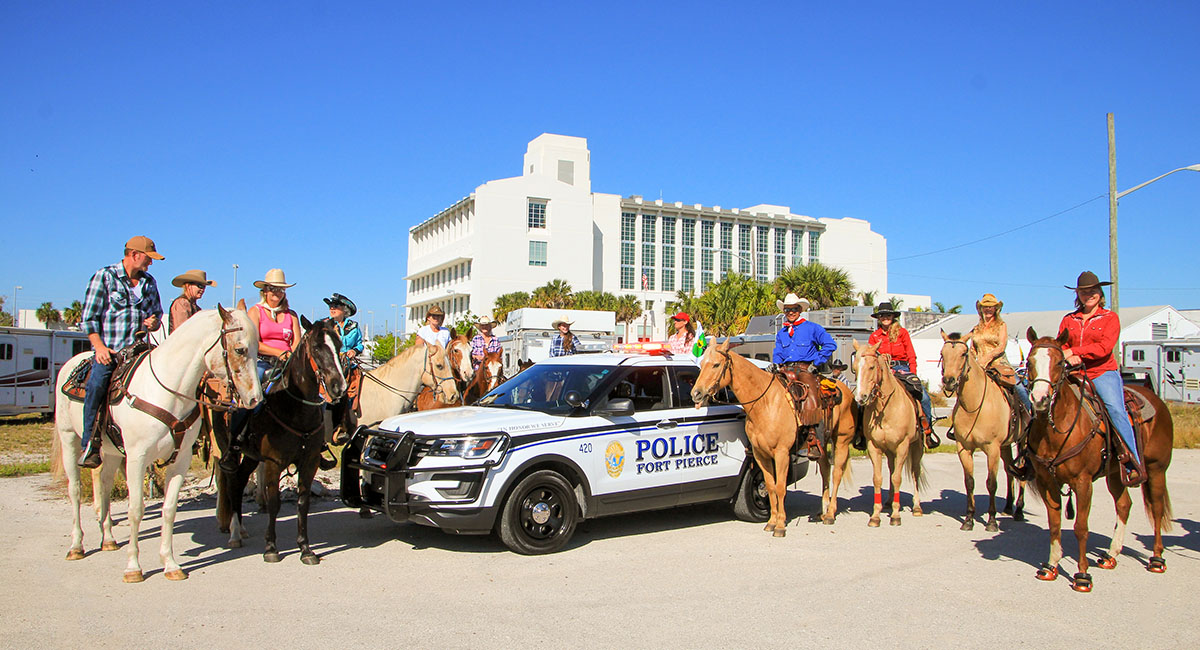
MOTORING ON
The city approved the department’s first automobile in May 1924. According to a newspaper account: “Possession of a car, it was pointed out, would enable the chief to give much better service in covering the city adequately, and might also help in curbing speeders.”
Today’s fleet consists of 75 vehicles including three crime scene vans and a mobile drone unit van. Additionally, the department has a 21-foot boat, four message board trailers, two ATVs, two Segways and a security tower trailer.
Former Chief Baldwin credits Kerlikowske with changing the department’s mission, moving it toward community policing, where law enforcement partners with civilians to address concerns and issues.
From Tedder’s perspective, the shift was worthwhile.
“For community policing to work, you first have to get control of the high crime areas. Then you have to keep your finger on it and monitor. You check your beat daily. Fort Pierce works very hard to make that happen, literally walking the neighborhoods, even when [people] don’t want them there.”
Community policing requires more interaction, talking to people, finding out what matters most to them. When Kirk started in law enforcement, he says officers didn’t routinely wave and smile at people. “We added officers on bicycles. We changed the uniform. The community started trusting us more.”
Because Fort Pierce is diverse, a diverse police department is essential.
“You have to understand the cultures,” Tedder says. “People see things differently and you have to be mindful of that.”
DEPARTMENT OUTREACH
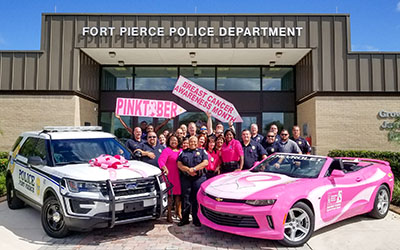
Today’s Community Policing Bureau is the department’s largest division, sometimes handling 1,500 calls a week. Commanded by Deputy Chief Kenny Norris, its stated mission is to build a strong partnership with the community, ensuring that fundamental rights and freedoms are rendered to everyone. The bureau includes uniformed patrol officers, the Crime Suppression Unit, Community Service officers and civilian personnel.
Another outreach of the department is Community Hope House [RICH], 2304 Avenue I. It will provide educational assistance, conflict-resolution, socialization and self-esteem building skills for children, parents and seniors, with the goal of creating a stronger, more trusting relationship between the police and the general public.
“Our community engagement has been one of our biggest attributes in solidifying the bridges that unite us with our citizens,” Hobley-Burney says.
There was a day when crime — especially drug-related crime — ruled certain Fort Pierce streets. Kirk remembers the 1980s, when national news anchors labeled Avenue D “the street that never sleeps” and Fort Pierce “the crack capital of the United States.”
“We had a population of 33,000 with 30 murders a year,” Kirk says. “Number 2 in the country for most violent crimes per capita. A man I knew told me he’d lie in bed and listen to gunshots at night, sometimes up to 120.”
Statistically, Fort Pierce is much safer now with documentable and ongoing progress. When crimes are committed, however, victims are still vulnerable. FPPD’s Victims Advocate Unit led by Angela Brathwaite provides emotional support, helps victims find resources and works with the State Attorney and social services.
Innovations in criminal justice aid officers in fighting crime and corruption. Maj. Carlos Rodriguez leads the Support Services Bureau which includes Crime Analysis and Intelligence, Criminal Investigative Division, Office of Quality Assurance, Evidence, Accreditation, Recruiting, Armory and Honor Guard.
Hobley-Burney announced in 2022 that Fort Pierce was ranked as one of the 100 safest cities in Florida in 2021 by the National Council for Home Safety and Security.
“This is a proud moment,” she says. “The partnership with our community … coupled with the dedication of our officers and support staff proves that together we can make a difference. Thank you to the dedicated men and women of the Fort Pierce Police Department and to our community and stakeholders who invested and believed in us.”
NOT TO BE FORGOTTEN
The thin blue line symbolizes the role of law enforcement in creating civil order in the midst of chaos but also the tenuous line between life and death that police officers walk each day. Fort Pierce Police Department has lost four officers in the last century.
On Oct. 29, 2022, a multi-agency honor guard unveiled the sign for the Sgt. Danny Parrish Fallen First Responders Park on U.S. 1 across the street from police headquarters. It is named for the most recent city officer to die in the line of duty.
The city also unveiled a life-sized statue patterned after Parrish. Designed to represent all first responders, including both law enforcement and fire and rescue, it stands in front of the department, a hand frozen in salute at the nation’s flag.
The Fort Pierce City Commission approved the initiative in 2018. The Fort Pierce Police Department Charitable Trust was behind efforts to rename the park and raise $57,000 for the statue.
In Memory Of...

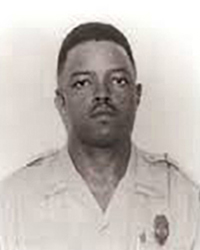
Willie B. Ellis
JULY 17, 1966
When Officer Willie B. Ellis and Officer Clifford Minus responded to a domestic disturbance call, Eugene Emerson shot both officers. Minus survived; Ellis, 43, was promoted posthumously to sergeant. In 2000, the city dedicated the Avenue D Substation to his memory.
JANUARY 12, 1987
Lt. Grover Cooper and Detective Jimmy Wouters, backed up by other officers and part of a joint investigation with the St. Lucie County Sheriff’s Office, approached a White City home suspected of illegal drug activity. Cooper, 31, headed the police department’s drug investigation unit. He and Wouters, 33, entered, identifying themselves as law enforcement, and a gunfight ensued. Cooper was killed. Wouters later died at the hospital. Officer Robert Spring also was wounded, but survived.
Cooper and Wouters were promoted posthumously to captain and sergeant, respectively. Exactly 25 years later, the city renamed the main station for the Fort Pierce Police Department the Grover C. Cooper III, James A. Wouters Main Police Station.
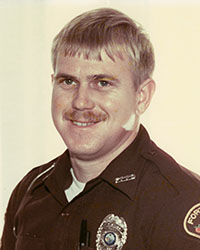
Danny Parrish
JANUARY 19, 1991
For Officer Danny Parrish, 29, it must have had all the markings of a routine traffic stop — 18-year-old Billy Leon Kearse was driving the wrong way down a one-way street. When Kearse couldn’t produce a driver license and provided several aliases, Parrish attempted to handcuff him. In the resulting scuffle, Kearse grabbed Parrish’s gun and shot him 13 times before fleeing.
A passing taxi driver stopped and called for help using Parrish’s radio. Although Parrish wore a bullet-proof vest, he died from his injuries and was promoted to sergeant.
When arrested, Kearse confessed and was sentenced to death. Several appeals have been denied.
Jim Tedder was a detective on the case. “When we brought Kearse in for his interview, the entire hallway was filled with officers and their wives. I never saw anything like it.”
Tedder says he doesn’t know if he’ll still be around when Kearse enters the execution chamber. “I don’t know if I’d go. I still wrestle with that. There’s a handful of cases I think about every day, and Danny’s is at the top of the list.”
See the original article in print publication
© 2023 Fort Pierce Magazine | Indian River Magazine, Inc.

